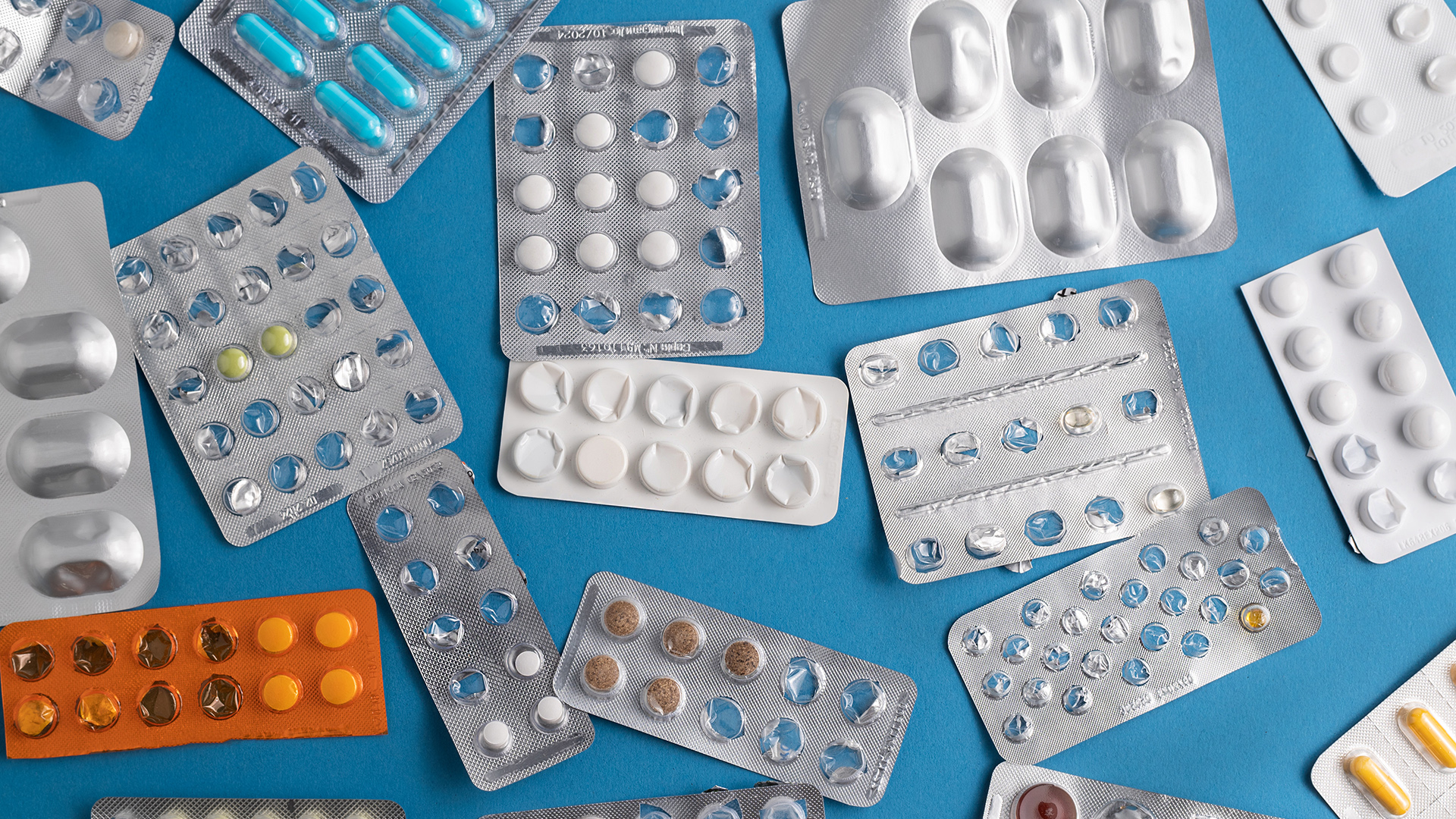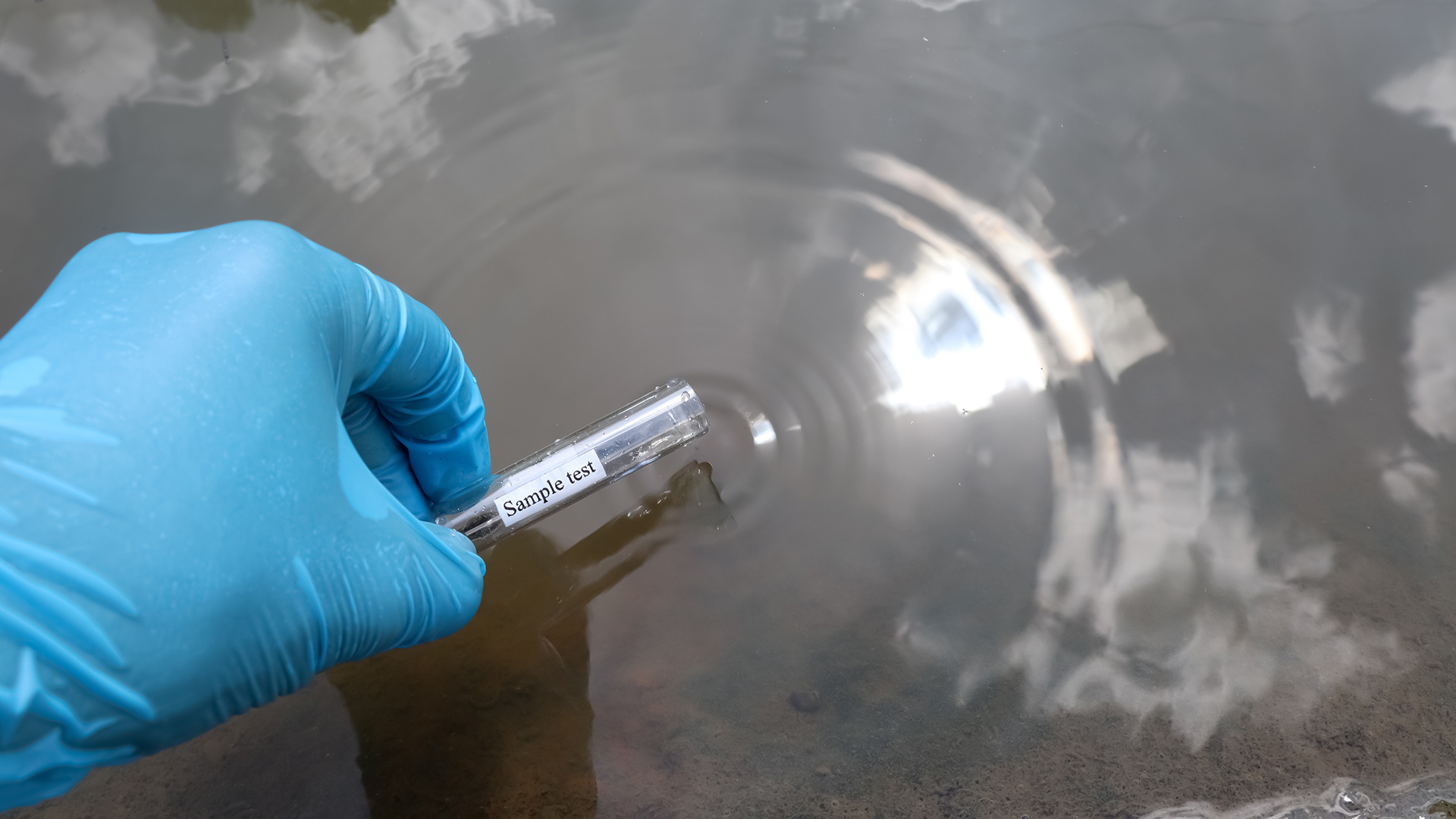
Dr Kelly Thornber, Post-Doctoral Research Fellow at the University of Exeter, discusses the key drivers of pharmaceutical pollution and its impact.
In 2020 the UK’s National Health Service (NHS) became the first health service in the world to commit to carbon net zero. NHS sustainability plans are now driving an unprecedented push for healthcare suppliers, distributors, employees and patients to change their practices and behaviours in the name of sustainable healthcare. But are these efforts sufficient to curb the detrimental planetary impacts of our healthcare system? Dr Kelly Thornber, Research Fellow in Sustainable Development at the University of Exeter and Co-Director of the new Pharmaceutical Pollution Solutions Hub explains why our greener healthcare sustainability strategies need to become bluer.
Why should we be concerned about pharmaceutical pollution?
Pharmaceutical pollution of waterways is rising. These chemicals are being detected in rivers, lakes, seas, even groundwater, sometimes at concentrations which are known to have physiological impacts on wildlife.1,2 Pharmaceutical compounds are designed to be active at very low concentrations, and many of their targets are evolutionary conserved, meaning that they can have impacts on organisms at all trophic levels.
The effects of pharmaceuticals in the environment on wildlife tend to be chronic, with long-term impacts that can be difficult to observe and measure through short-term studies. Nevertheless, there is an increasing evidence base demonstrating negative impacts on behaviour, survival, reproduction, and development. For example, oestrogenic compounds (from the contraceptive pill, HRT drugs) can alter fish reproduction,3 antidepressant drugs can alter behaviour, making fish less risk-averse and more susceptible to predation,4 and non-steroidal anti-inflammatory drugs (NSAIDs) can have a range of detrimental physiological and physical impacts, including renal failure.5,6 Antimicrobial compounds in the environment are also a serious issue as not only do these compounds drive antimicrobial resistance (AMR) but they can also impact microbial communities which are involved in fundamental ecological processes such as carbon and nitrogen cycling.7,8
Pharmaceuticals can remain active in the environment for long periods of time, and some are now entering the environment continually due to the high volumes being consumed. The breakdown products of some drugs can also be pharmaceutically active, with effects that can be different from the parent compounds. What is worrying is that many drugs are entering the environment and we just do not know what the environmental impacts of these are. Illustrating this, a 2019 study showed that in the EU there were 975 approved drugs targeting human proteins (i.e., excluding antimicrobials); only 12% had comprehensive environmental risk assessments.9 Even for these compounds, their risk assessments would have only been carried out on a few species and would not have taken into account the potential impacts of mixtures. Increasingly, pharmaceuticals in the environment are present within a cocktail of other drugs and pollutants that might have combination (e.g. additive) effects, or even work in synergy to have a greater overall effect than the sum of the individual drugs alone.
In what ways does the use of pharmaceuticals in healthcare contribute to this problem?
As pharmaceutical consumers we are responsible for this problem – most of these compounds are not found naturally – and pharmaceutical usage in human healthcare is rising at a rapid rate, accounting for £16.8bn of the NHS England budget in 2015/16 and rising by 8% per year.10 Up to 90% of administered drugs are excreted in our urine or faeces11 so either enter the environment directly or into sewage systems where these are available. Many pharmaceuticals are not removed by wastewater treatment plants (WWTPs),12 so even where this infrastructure exists these compounds still enter the environment either via the WWTP effluent water or through the resulting sludge that is applied to fields.
Wastage within healthcare is an issue, with at least 10% of drugs used within NHS England considered to be overprescribed.13 A recent study also showed that only 27% of people regularly returned unused drugs to pharmacies in the UK.14 Many people still dispose of unused or expired drugs into household wastewater or general waste, where they then enter landfill sites and can leach into water systems. Pollution during manufacturing is a major problem and very difficult to address since supply chains are international, complex and often lack transparency.15 The pharmaceuticals used in UK healthcare are increasingly manufactured in low- and middle-income countries where there are poor wastewater treatment facilities and environmental regulations, so these pollutants directly enter local water systems. This has been particularly well-documented for antibiotic manufacturing, with one lake downstream of antibiotic manufacturing facilities in India found to have antibiotic concentrations higher than human therapeutic blood plasma concentrations.16

© shutterstock/Bidna Iryna
Can you outline some of the factors that have hindered progress in mitigating pharmaceutical pollution?
One of the greatest challenges in addressing this issue is our ‘pill for every ill’ culture,17 whereby we increasingly rely on pharmaceuticals to compensate for socioeconomic factors that are increasing rates of disease, so we are treating the consequences of these diseases rather than preventing them occurring in the first place. There is also a general lack of awareness about this issue, although national and global efforts to address AMR have drawn political attention to the need to mitigate pharmaceutical pollution.7
Poor environmental monitoring is a substantial barrier to making progress – only a handful of pharmaceuticals (nine as of October 2022) were on the EU watch list (2022/0344); these are the compounds being regularly monitored and the ones that companies (including WWTPs) have to keep below the regulatory limit in their effluents. The watch list changes regularly and is far from comprehensive, so without this essential data evidencing the problem, it is difficult to mitigate or manage the situation. But even if we did have significant monitoring data and a broad evidence base of the issue, at the moment the environmental impacts of pharmaceuticals are not taken into consideration within healthcare decision-making. This touches on possibly the most significant factor limiting progress: the lack of cross-sectoral coordination.
Clearly, the factors driving pharmaceutical pollution are complex and deeply rooted within our society, so to find effective solutions we need to look at the bigger picture and find ways to work across sectoral, national, and organisational boundaries. This is not going to be straightforward, and is likely to raise more difficult discussions and decisions, for example, how far are we willing to compromise on the beneficial impacts that pharmaceuticals confer on human health and the economic cost of healthcare, in order to protect the environment?
What can the healthcare system do to address this?
Our use of pharmaceuticals is not sustainable in the long term, so this issue should be fully integrated into sustainable healthcare strategies, alongside efforts to reduce carbon. This has already been initiated in Scotland, thanks to work by the One Health Breakthrough Partnership, who have been leading the way in this field. Water stewardship (including pollution) is included in NHS Scotland’s Climate Emergency and Sustainability Strategy.18
The big question here is really ‘how’ should we do this – what is the most effective action we can take? This is the aim of our new Pharmaceutical Pollution Solutions Hub – to identify pragmatic and effective solutions to mitigate and reduce the environmental impacts of pharmaceutical usage in healthcare. We are approaching this issue from a systems perspective, which recognises that this is not just a problem for the healthcare sector, the pharmaceutical sector or the water sector; it is a collective issue that requires collective action.

© shutterstock/chemical industry_2073256181
We are bringing together stakeholders from across these sectors to discuss the leverage points for change across the UK healthcare system,19 and co-producing recommendations for action. Importantly, we are also bringing together industry, government and civil society stakeholders with leading researchers from a range of disciplines, to identify opportunities where collaborative research could accelerate action.
Encouragingly, there are already a number of initiatives that are making progress in this field, for example, the One Health Breakthrough Partnership has recently begun a project focused on eco-prescribing strategies, and across Europe, there are a number of projects exploring interventions to reduce pharmaceutical pollution in hospital wastewater.11 Recent studies have also considered regulatory measures.20,21 A number of non-profit organisations in the UK are actively raising awareness and facilitating discussions about the issue, including Healthcare Ocean, the Sustainable Healthcare Coalition and Pharmacy Declares. The pharmaceutical industry has long been focusing on greener drugs by design, to reduce their environmental impact, and is increasingly endorsing eco-pharmacovigilance initiatives to monitor, assess and mitigate the impacts of pollution. The PREMIER project is a consortium of industry and academic partners focused on improving the availability and accessibility of pharmaceutical ecotoxicology data.
Thus, there is good momentum for action in this field, but what is needed to consolidate these initiatives, and drive tangible change, is the development of regulatory frameworks, guidelines and strategies that incorporate environmental pharmaceutical pollution into decision-making processes across the system, from drug licencing and healthcare technology assessment to healthcare procurement and prescribing, to environmental monitoring and surveillance. This is already being done for carbon and needs to extend to wider sustainability issues. Greener healthcare sustainability strategies need to become bluer.
References
- Silori, R., Shrivastava, V., Singh, A., Sharma, P., Aouad, M., Mahlknecht, J. & Kumar, M. Global groundwater vulnerability for Pharmaceutical and Personal care products (PPCPs): The scenario of second decade of 21st century. Journal of Environmental Management 320, (2022).
- Wilkinson, J. L., Boxall, A. B. A., Kolpin, D. W., Leung, K. M. Y., Lai, R. W. S., Wong, D., Ntchantcho, R., Pizarro, J., Mart, J., Echeverr, S., Garric, J., Chaumot, A., Gibba, P., Kunchulia, I., Seidensticker, S., Lyberatos, G., Morales-salda, J. M. & Kang, H. Pharmaceutical pollution of the world ’ s rivers. 119, 1–10 (2022).
- Gross-Sorokin, M. Y., Roast, S., Brighty, G. C. & Great Britain. Environment Agency. Causes & consequences of feminisation of male fish in English rivers. (Environment Agency, 2004).
- Hellström, G., Klaminder, J., Finn, F., Persson, L., Alanärä, A., Jonsson, M., Fick, J. & Brodin, T. GABAergic anxiolytic drug in water increases migration behaviour in salmon. Nat Commun 7, (2016).
- Galligan, T. H., Green, R. E., Wolter, K., Taggart, M. A., Duncan, N., Mallord, J. W., Alderson, D., Li, Y. & Naidoo, V. The non-steroidal anti-inflammatory drug nimesulide kills Gyps vultures at concentrations found in the muscle of treated cattle. Science of the Total Environment 807, (2022).
- Świacka, K., Michnowska, A., Maculewicz, J., Caban, M. & Smolarz, K. Toxic effects of NSAIDs in non-target species: A review from the perspective of the aquatic environment. Environmental Pollution 273, (2021).
- Bracing for Superbugs Strengthening environmental action in the One Health response to antimicrobial resistance. (2023).
- Kraemer, S. A., Ramachandran, A. & Perron, G. G. Antibiotic pollution in the environment: From microbial ecology to public policy. Microorganisms 7, (2019).
- Gunnarsson, L., Snape, J. R., Verbruggen, B., Owen, S. F., Kristiansson, E., Margiotta-Casaluci, L., Österlund, T., Hutchinson, K., Leverett, D., Marks, B. & Tyler, C. R. Pharmacology beyond the patient – The environmental risks of human drugs. Environ Int 129, 320–332 (2019).
- National Health Service. NHS website. Available at: https://www.england.nhs.uk/. (Accessed: 11th July 2022)
- Healthcare Without Harm. PHARMACEUTICAL RESIDUES IN HOSPITAL WASTEWATER: FIVE CASE STUDIES FROM EUROPEAN HOSPITALS.
- Comber, S., Gardner, M., Sörme, P., Leverett, D. & Ellor, B. Active pharmaceutical ingredients entering the aquatic environment from wastewater treatment works: A cause for concern? Science of the Total Environment 613–614, 538–547 (2018).
- Department of Health & Social Care. Good for you, good for us, good for everybody. (2021).
- Watkins, S., Barnett, J., Standage, M., Kasprzyk-Hordern, B. & Barden, R. Household disposal of pharmaceuticals: attitudes and risk perception in a UK sample. J Mater Cycles Waste Manag 24, 2455–2469 (2022).
- Stenuick, J.-Y. RECOMMENDATIONS FOR GREENER HUMAN MEDICINES. Healthcare Without Harm (2022). Available at: https://noharm-europe.org/documents/position-paper-recommendations-greener-human-medicines. (Accessed: 5th August 2022)
- Fick, J., Söderström, H., Lindberg, R. H., Phan, C., Tysklind, M. & Larsson, D. G. J. Contamination of surface, ground, and drinking water from pharmaceutical production. Environ Toxicol Chem 28, 2522–2527 (2009).
- Busfield, J. ‘A pill for every ill’: Explaining the expansion in medicine use. Soc Sci Med 70, 934–941 (2010).
- NHS Scotland. Climate Emergency & Sustainability Strategy. (2022).
- Kelly Thornber, Fiona Adshead, Angeliki Balayannis, Richard Brazier, Ross Brown, Sean Comber, Caroline Court, Iain Davidson, Michael Depledge, Caroline Farmer, Stuart Gibb, Richard Hixson, Claas Kirchhelle, Keith Moore, Marco Motta, Lydia Niemi, Stewart Owen, David Pencheon, Sharon Pfleger, Emma Pitchforth, Neil Powell, Wiebke Schmidt, Richard Smith, Georgina Sowman, Wendy Tyler-Batt, Helen Wilkinson, Edward CF Wilson, Lora Fleming, William Gaze & Charles Tyler. First, do no harm: time for a systems approach to address the problem of health-care-derived pharmaceutical pollution. (2022).
- Healthcare Without Harm. RECOMMENDATIONS FOR GREENER HUMAN MEDICINES IN THE REVISION OF THE EU GENERAL PHARMACEUTICALS LEGISLATION.
- Alejandre, J. C., Frascaroli, G., Escudero, A., Pahl, O., Price, L., Pfleger, S. & Helwig, K. Environmentally informed pharmaceutical prescribing in Scotland CREW Policy Brief.
This article is from issue 25 of Health Europa Quarterly. Click here to get your free subscription today.

























